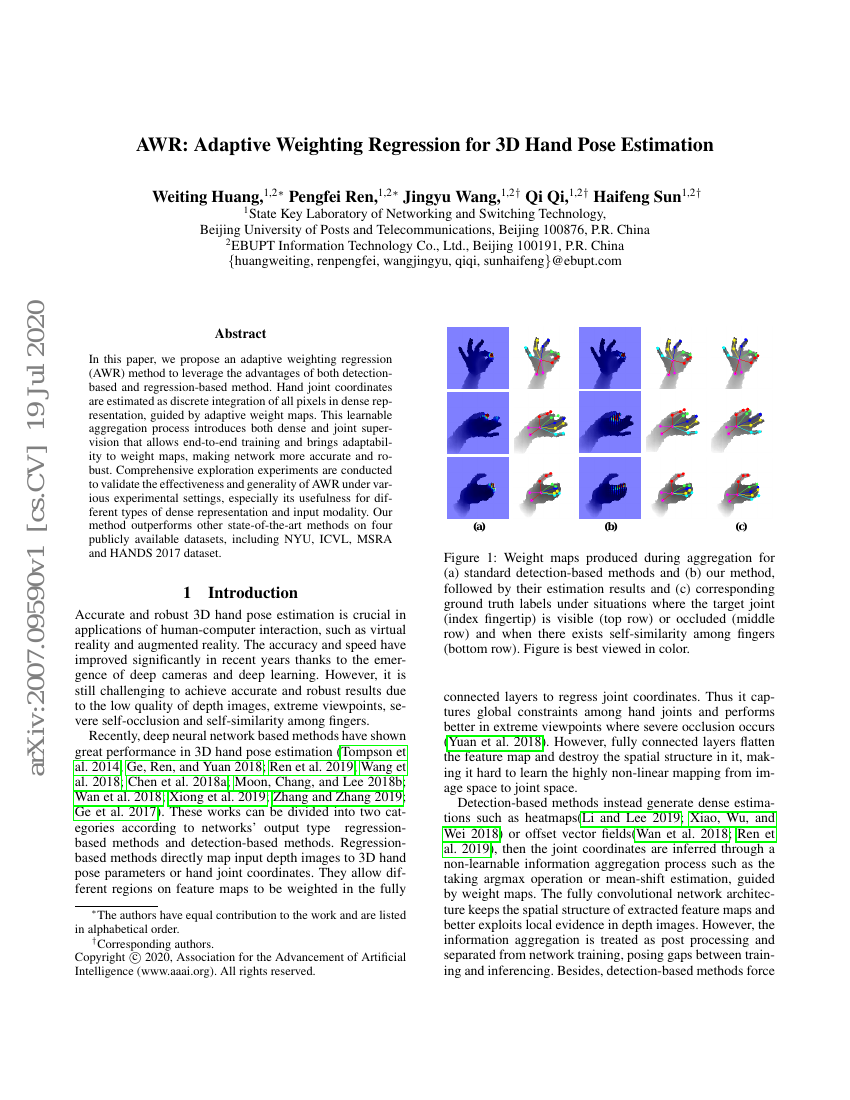
摘要
本文提出了一种自适应加权回归(Adaptive Weighting Regression, AWR)方法,旨在融合基于检测与基于回归方法的优势。通过自适应权重图的引导,手部关节坐标被建模为密集表示中所有像素的离散积分。该可学习的聚合过程同时引入了密集监督与关节级监督,支持端到端训练,并赋予权重图自适应能力,从而提升网络的精度与鲁棒性。为验证AWR方法的有效性与通用性,我们开展了全面的消融实验,涵盖多种实验设置,尤其考察了其在不同类型的密集表示及输入模态下的适用性。在四个公开可用的数据集(包括NYU、ICVL、MSRA以及HANDS 2017)上,所提方法均优于现有的先进方法。
代码仓库
Elody-07/AWR-Adaptive-Weighting-Regression
官方
pytorch
GitHub 中提及
基准测试
| 基准 | 方法 | 指标 |
|---|---|---|
| hand-pose-estimation-on-hands-2017 | AWR | Average 3D Error: 7.48 |
| hand-pose-estimation-on-hands-2019 | AWR | Average 3D Error: 13.76 |
| hand-pose-estimation-on-icvl-hands | AWR | Average 3D Error: 5.98 |
| hand-pose-estimation-on-msra-hands | AWR | Average 3D Error: 7.15 |
| hand-pose-estimation-on-nyu-hands | AWR | Average 3D Error: 7.48 |